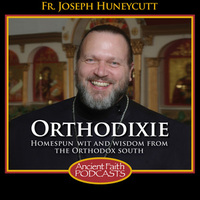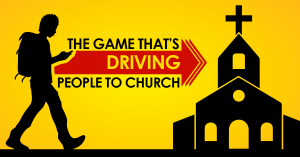 Herod Antipas, son of the Herod who slew the young children in Bethlehem at the time of the birth of the Lord Jesus, was ruler of Galilee when John the Baptist was preaching. This Herod was married to the daughter of Aretas, an Arabian prince. But Herod, an evil branch of evil stock, put away his lawful wife and took Herodias, his brother Philip’s wife, to live with him while Philip was still alive. John the Baptist stood up against this lawlessness and strongly denounced Herod, at which Herod threw him into prison. At the time of some feast at his court in Sebastia in Galilee, Salome, the daughter of Herodias and Philip, danced for the guests. Herod, in his cups and carried away by her dancing, promised her whatever she asked, even to the half of his kingdom. Instructed by her mother, she asked for the head of John the Baptist. Herod commanded that John be beheaded in the prison and his head brought on a platter. John’s disciples took the body of their teacher by night and buried it, but Herod tore out John’s tongue with a needle and then buried his head in an unclean place. What later happened to John’s head is recorded and can be read under February 24th.
Herod Antipas, son of the Herod who slew the young children in Bethlehem at the time of the birth of the Lord Jesus, was ruler of Galilee when John the Baptist was preaching. This Herod was married to the daughter of Aretas, an Arabian prince. But Herod, an evil branch of evil stock, put away his lawful wife and took Herodias, his brother Philip’s wife, to live with him while Philip was still alive. John the Baptist stood up against this lawlessness and strongly denounced Herod, at which Herod threw him into prison. At the time of some feast at his court in Sebastia in Galilee, Salome, the daughter of Herodias and Philip, danced for the guests. Herod, in his cups and carried away by her dancing, promised her whatever she asked, even to the half of his kingdom. Instructed by her mother, she asked for the head of John the Baptist. Herod commanded that John be beheaded in the prison and his head brought on a platter. John’s disciples took the body of their teacher by night and buried it, but Herod tore out John’s tongue with a needle and then buried his head in an unclean place. What later happened to John’s head is recorded and can be read under February 24th.
God’s punishment was quickly visited upon this group of evildoers. Prince Aretas, to avenge his daughter’s honour, attacked Herod with his army and brought him to his knees. The defeated Herod was condemned by the Roman Caesar, Caligula, to exile first in Gaul and then in Spain. As exiles, Herod and Herodias lived in need and debasement until the earth opened and swallowed them up. Salome, Herodias’s daughter, came to a bad end in the river Sikaris (Sula).
The death of John took place before the Passover, but its commemoration on August 29th was instituted because it was on this day that a church, that had been built over his grave in Sebastia by the Emperor Constantine and the Empress Helena, was consecrated. In this church were also placed the relics of John’s disciples, Eliseus and Audius.
More.
For those on the so-called New Calendar, today is a strict fast day.
For those on the so-called Old Calendar, the Beheading of St John the Baptist is remembered 13 days later on September 11th. Not a good day, some say, for Madonna to be “celebrating” in Moscow.
About the icon:
If you look closely at the icon of St. John you will see a number of symbolic details. First, the “Forerunner of Christ” is usually portrayed with wings, for he was the messenger of the Lord who came to prepare people’s hearts for the Good News. Second, he is placed in the desert, where he spent such critical parts of his life. Third, his staff and scroll, which proclaim his very words at seeing Jesus, “Behold the Lamb of God, who takes awaythe sins of the world.” Finally … notice his head on a sort of platter, reminding of us of the ultimate price he paid.
NOTE:
In a number of cultures the faithful commemorate this day by eating nothing on plates. As mothers serve the food for the day in bowls, they tell their children, “Today we honor the Forerunner of Christ by choosing not to use plates, because Salome asked for St. John’s head to be given to her on a platter.” For the same reason, no knives are used on that day, since a sharp blade was used to take the life of this godly prophet. As this is a strict fast day, soups and other meager food are typical. Bread is torn from the loaf, knives are not used to cut it. These simple, physical reminders help us connect to the story surrounding the death of the baptizer of our Lord, and help make this day different.










